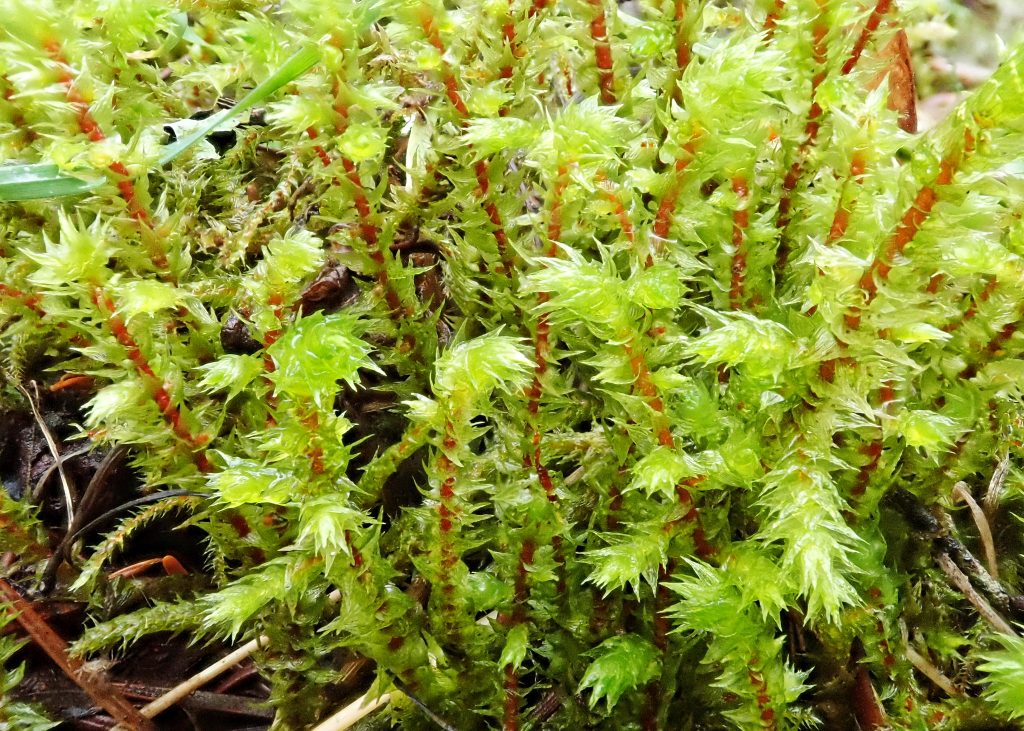
This is another of that handful of mosses that I thought I could identify from a standing position, but in the interest of accuracy I decided to key out a shoot of it. And ran into problems almost immediately because Elva Lawton’s key uses papillose leaves in the first couplet.
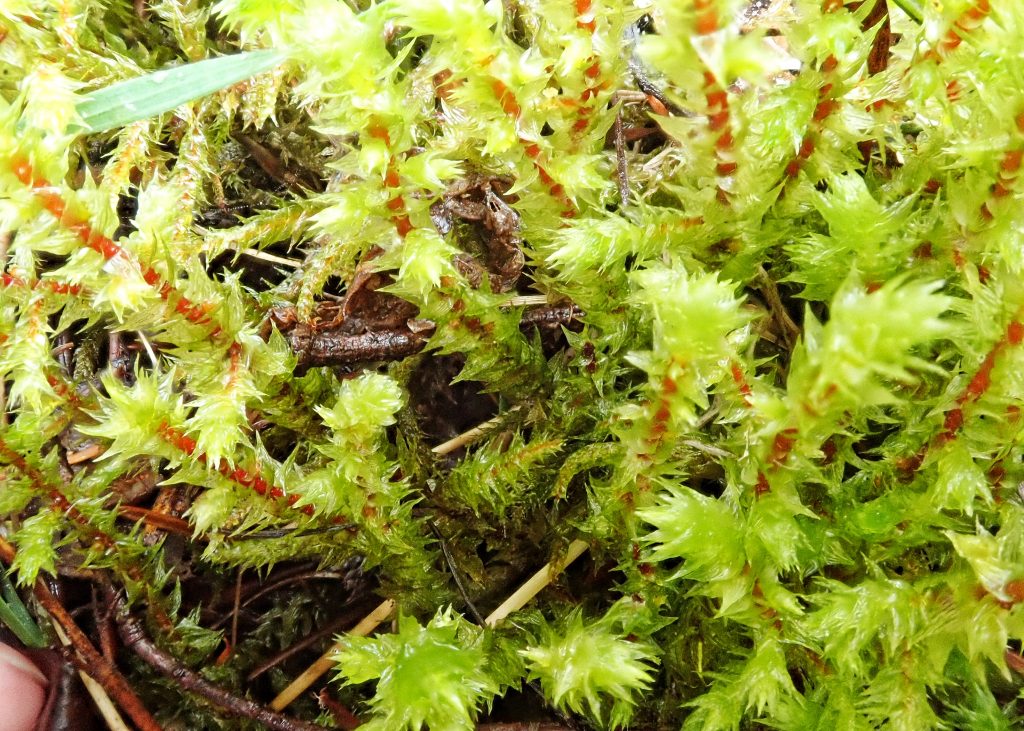
Real bryologists seem to have no problems discerning papillae, but I can never be sure whether I’m seeing actual bumps or merely focusing 1 micron deeper into the cell (this is so frustrating to me that my stomach actually clenches a bit when I see the word papillose in a key). So I took some photos and sent them to Terry McIntosh. Then I started researching and found that Flora of North America doesn’t use that characteristic! And I already knew the leaves were plicate and the costa was strong, and went 2/3 of the way through the leaf. So I pestered Terry for nothing, but he was kind enough to confirm my identification anyway.
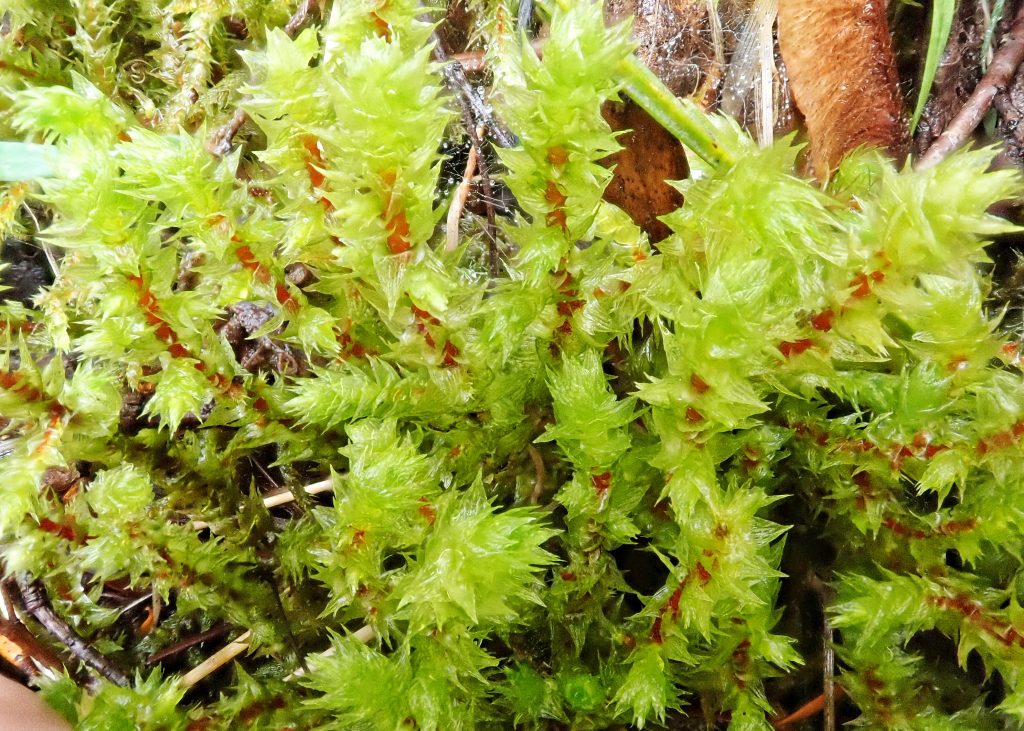
This moss has many colloquial names, including goose-neck moss, roughneck moss, shaggy moss, forest dragon moss, etc. But my favorite, and in fact one of my favorite common names for any plant, is electrified cat-tail moss! Now there is an evocative name, and one of the reasons I can readily recognize it is that that is just what this moss looks like! Speaking of names, Hylacomiadelphus triquetrus has been suggested as a synonym for this species, due to molecular differences between it and the rest of Rhytidiadelphus.
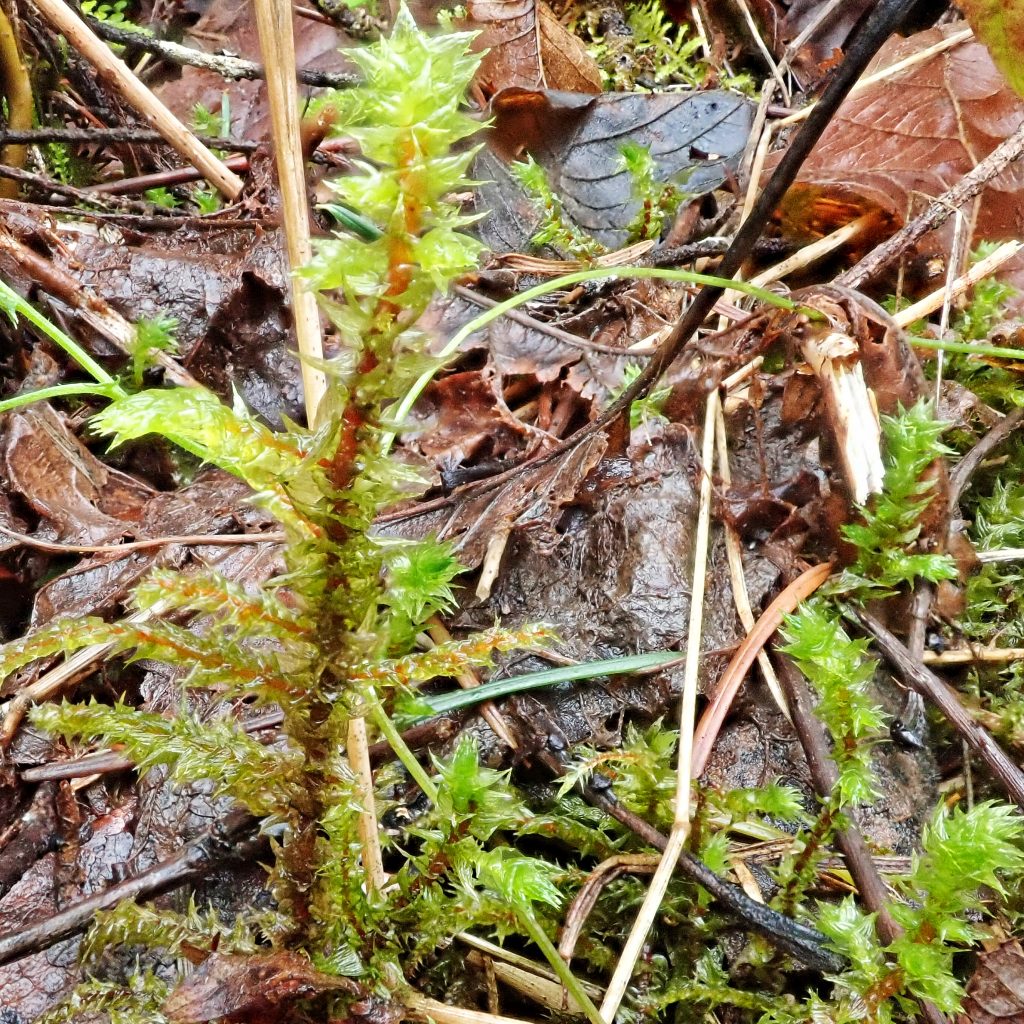
Rhytidiadelphus triquetrus is a common forest floor moss west of the Cascades, forming large patches in deep soil, and adding a chaotic texture to the orderly forms of the masses of Hylocomium splendens, Plagiomnium insigne, and Kindbergia sp. it grows with.
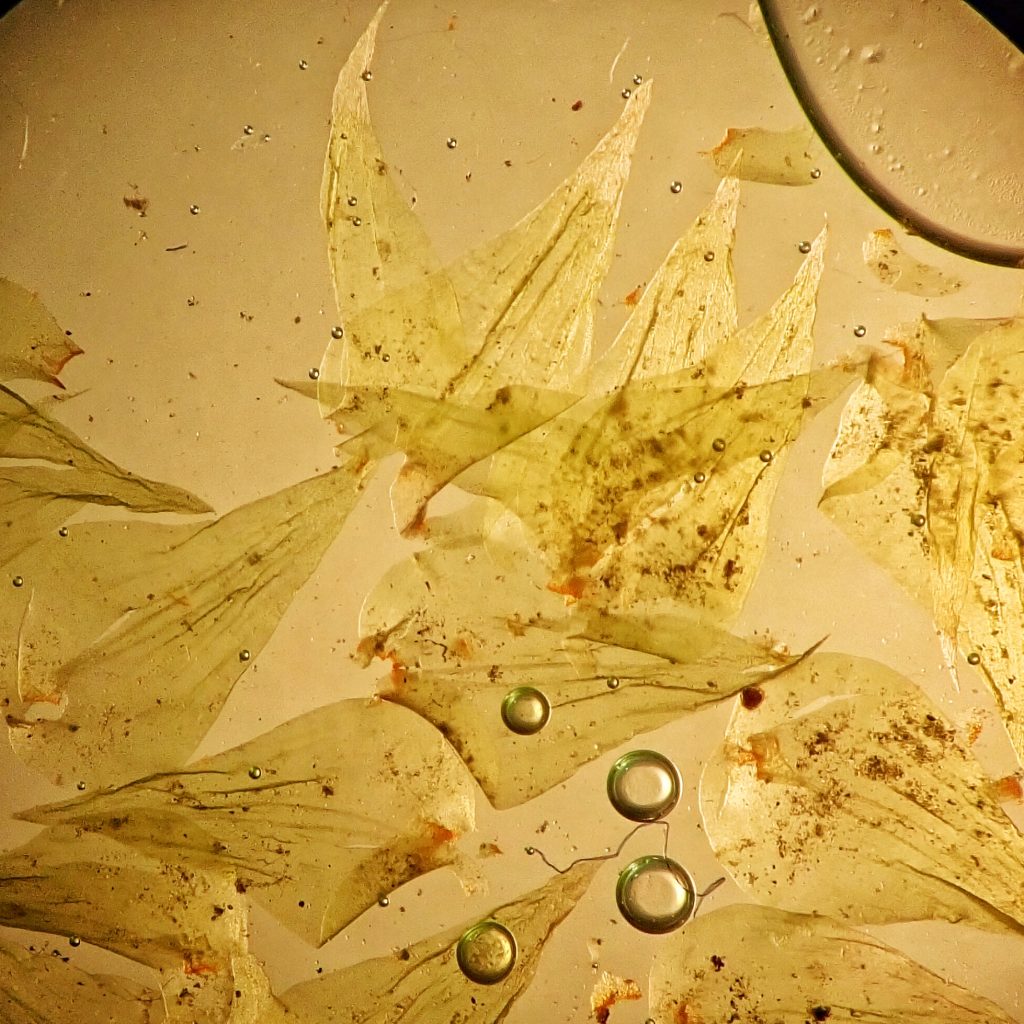
Description– Tall moss (up to 6” high), disheveled looking, with irregular branching, an angled branch tip with tufts of leaves, and widely spreading leaves; the leaves are wrinkled lengthwise, and the double costa extends half to 2/3 of the way toward the leaf tip, which is more-or-less straight, and not sickle shaped (falcate)
Similar species– Rhytidiadelphus loreus has thinner branches without a ‘messy’, angled tuft at the end, falcate leaves, and the double costa doesn’t extend halfway down the leaf; R. squarrosus lacks wrinkled (plicate) leaves, and they bend at right angles halfway along the leaf; Rhytidium rugosum has transverse rather than longitudinal wrinkles; and Rhytidiopsis robusta is nearly unbranched.
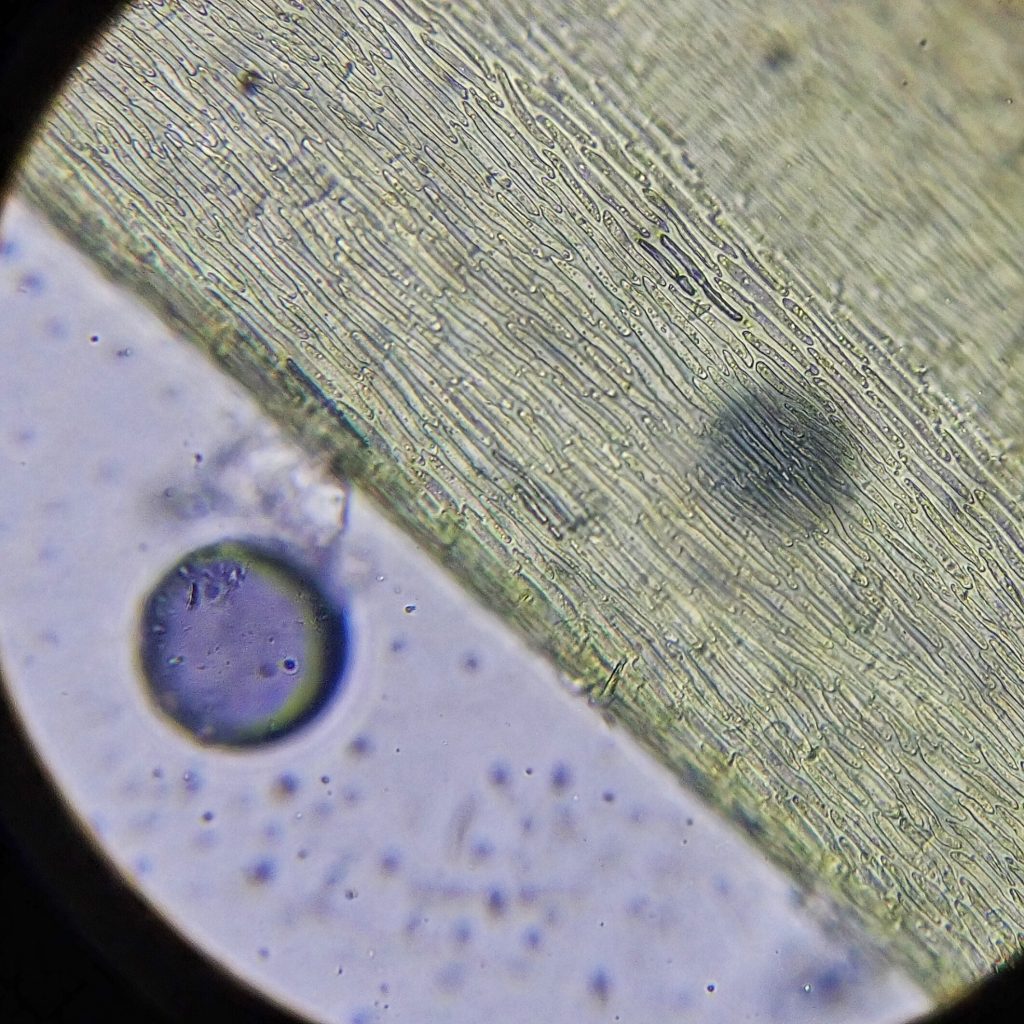
Habitat-Mesic and montane forest floors with deep layers of humus
Range-Region wide in appropriate habitat
Reproductive timing-Spring and summer
Etymology of names– Rhytidiadelphus is from the Greek, and means ‘brother of Rhytidium’, another genus of moss with very wrinkled leaves (from the Greek ‘rhytis’, for wrinkled). The specific epithet triquetrus means ‘3 angled’ and refers to the broadly triangular leaf.
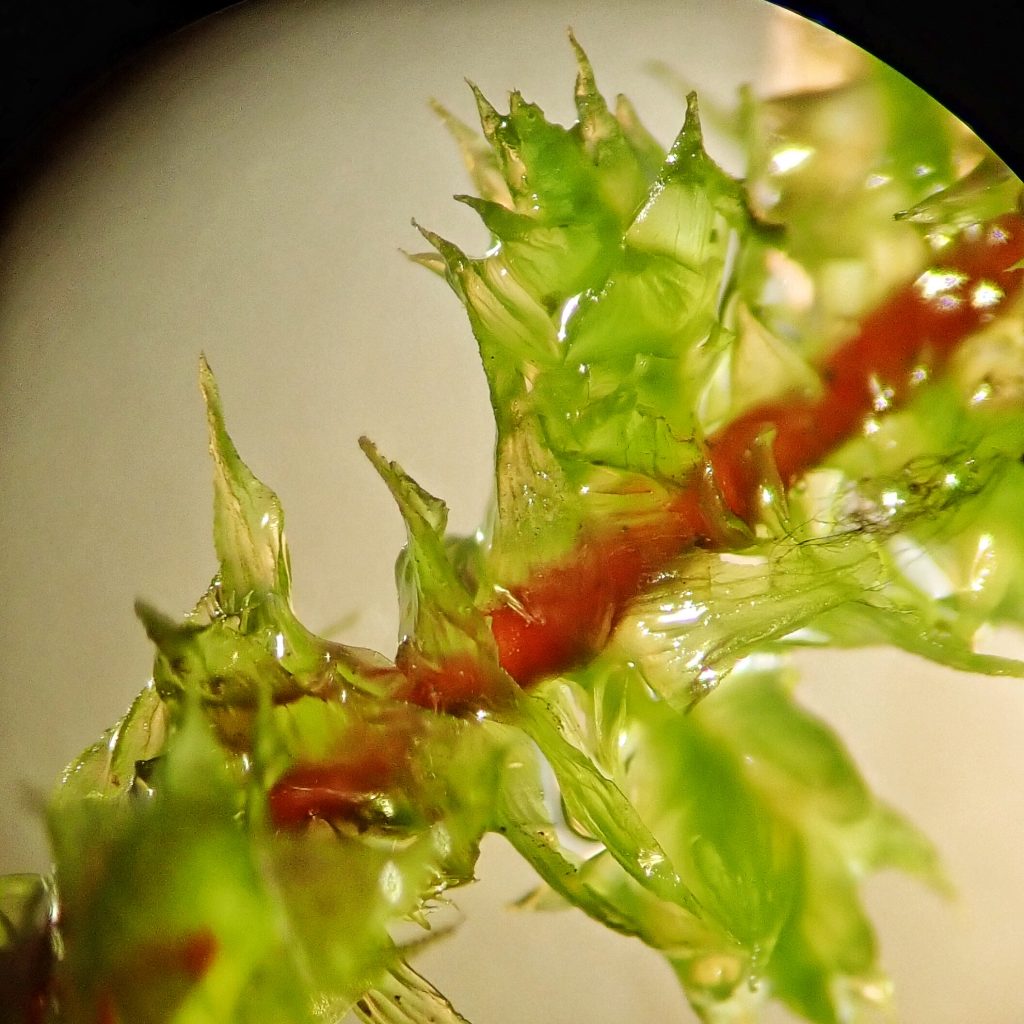
http://www.efloras.org/florataxon.aspx?flora_id=1&taxon_id=200002593
https://websites.rbge.org.uk/bbs/activities/mosses/Rhytidiadelphus%20triquetrus.pdf
http://www.borealforest.org/lichens/lichen13.htm
https://en.m.wikipedia.org/wiki/Rhytidiadelphus_triquetrus
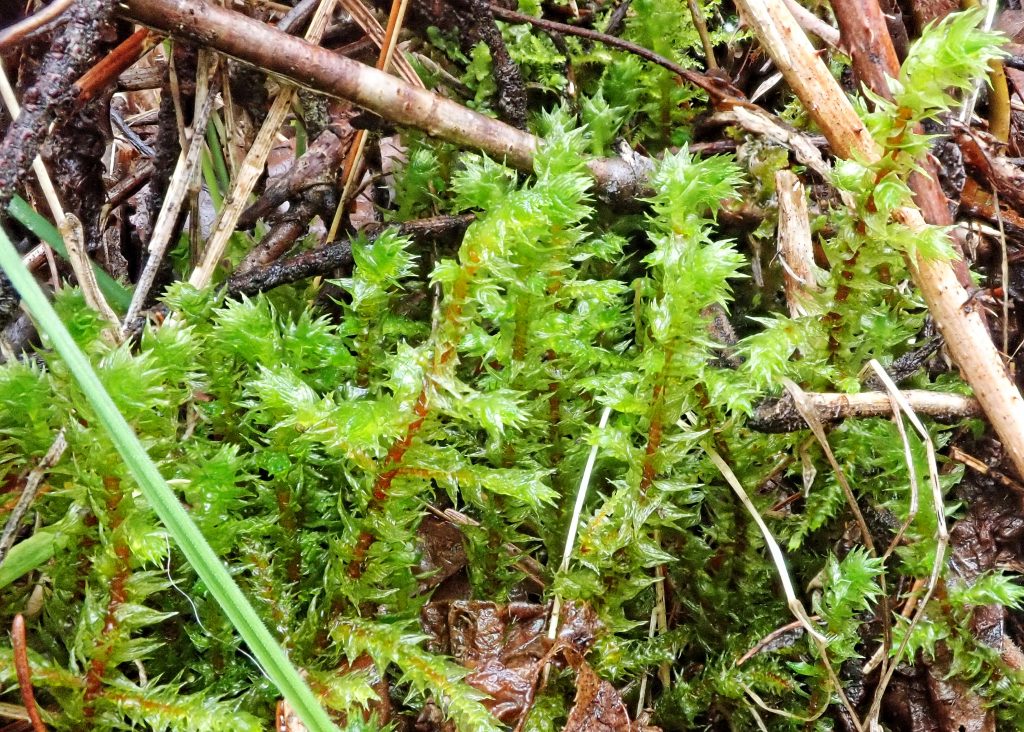
Electrified cattail is perfect! I think even I will be able to recognize it now! 👍☺️
Electrified cat tail indeed!
Great photo of the cells. It is not often that one gets to peer inside plant cells to see their contents.
Thanks, Sharon!